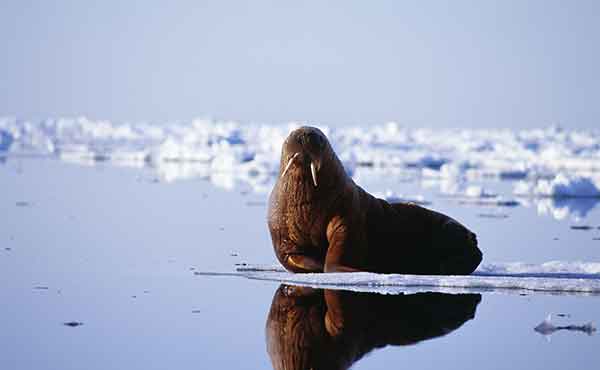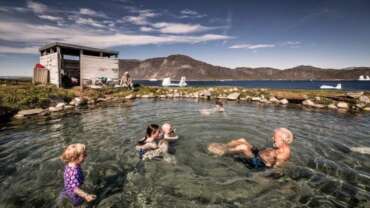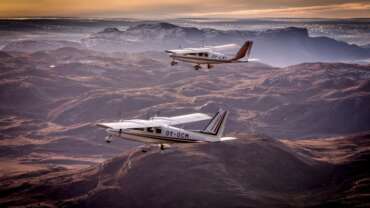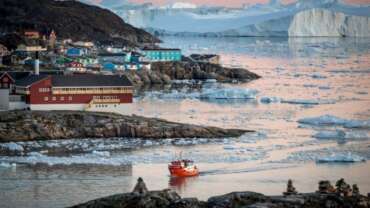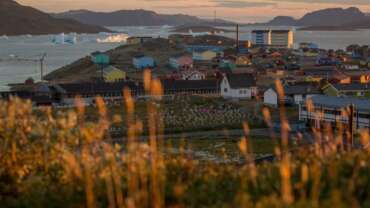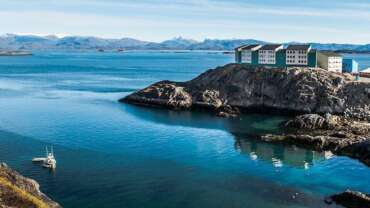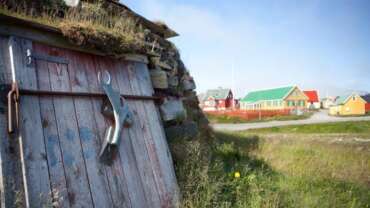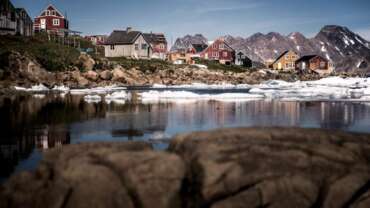National Park in Greenland
THE WORLD’S BIGGEST NATIONAL PARK
The National Park in Greenland is an Arctic paradise and a wilderness with wildlife that cannot be matched in the inhabited areas of the country. Located in the north-eastern corner of the country, the park is larger than any other national park in the world.
However, due to its size and relative inaccessibility it is not a national park in the traditional sense.
Apart from the personnel at a couple of meteorological stations and the Danish Armed Forces surveillance unit, the elite Sirius Patrol, no people live in the area.
The only people who have regular access to the area are sealers and whalers from Ittoqqortoormiit, a town in North-Eastern Greenland.
Covering an area of 972,000 square kilometres, Greenland’s National Park is the world’s largest. The area is nearly the combined size of France and Spain and includes the entire north eastern part of Greenland north of Ittoqqortoormiit (Scoresby Sound) and stretches from Knud Rasmussen’s Land in the north to Mestersvig in the east.
The coastline is 18,000 km in total and includes both the highest parts of the Northern Hemisphere’s largest ice cap and the world’s northernmost area of land. For thousands of years, various Inuit cultures have lived and survived here thanks to the high Arctic species of animal.
LESS THAN 50 PERMANENT INHABITANTS
Today, the hunters from Ittoqqortoormiit are the only ones who have regular access to the area. They go on a dogsled trips and hunt in the National Park, which is basically otherwise uninhabited. The only people who live permanently in the vast area are a small group of people totalling approx. 40 people over five settlements – the staff at weather and monitoring stations.
MONITORING
The Sirius Patrol has its main base at Daneborg in Northeast Greenland. The Patrol is responsible for monitoring the area by dogsled and sailing. They also have to control expeditions and conservation regulations in the national park. The weather stations at Station North and in Denmark’s Harbour are also staffed. The main task of the staff in Denmark’s Harbour is to launch a weather balloon twice a day with measuring instruments. Mestersvig is also being staffed and especially in summer, there is a lively activity in the old mining town.
RESEARCH
Zackenberg Research Station is located about 450 km north of Ittoqqortoormiit. Monitoring and research is conducted here into the effects of climate change. The station is located in a high arctic climate zone that reacts earlier than other zones to changes in global weather. On the whole, each year the National Park is the goal for a growing number of scientific expeditions. The area is rich in arctic flora and fauna, and many also come to explore the many traces of ancient settlements. Along the thousand-kilometre-long coast are the remains of ancient Inuit settlements, where many are thousands of years old.



